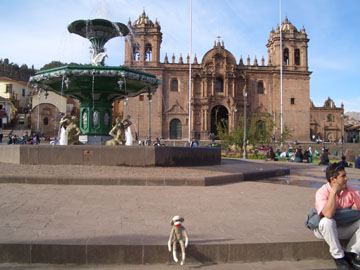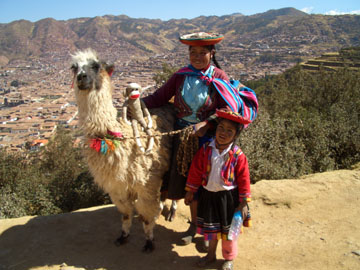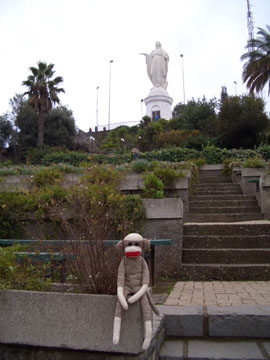|

|
I rested a spell at the Plaza de Armas in
Cuzco, Peru after arriving in South America. The Plaza was originally known
as Huacaypata, Quechua for "Warrior Square", when built by the Incas. In
1532, Spanish Conquistador Francisco Pizarro defeated the Inca Empire and took control of Cuzco
and renamed the plaza. Behind myself and the fountain is la Catedral, one of the
first cathedrals built in the Americas. La Catedral was built between 1538 to 1664
upon the spot where the palace of Inca Viracocha and the temple of Suntur Wasi once
stood. |
I gazed in wonder at the Incan city of Machu Picchu in Peru. The
architectural, aesthetic and astrological prowess of the city's builders
certainly may not be questioned. The 18 square kilometers of tight-fitting
terraced granite was in remarkable condition when rediscovered by Hiram Bingham
in 1911 and it is truly an awe inspiring sight. Machu Picchu, meaning "old peak"
in Quechua, was built in the mid-1400's by Pachacuti Inca Yupanqui. |

|
|

|
Here I rest my feet from hiking in the Andes Mountains and hitch a ride with this brightly adorned Peruvian lady and her daughter. |
In Santiago, Chile, this nearly fifteen meter tall statute of the Virgin Mary adorns the apex of Cerro San Cristobal, or Saint Christopher's Hill. The statue was donated by France in the 1920's. The view of the city from the 860 meter high hill is quite impressive and it was a wonderful place to digest the meal and conversation in which I had recently engaged with Amelia. |

|
|

|
Amelia
was able to delegate some of her responsibilities at the Red Cross in order to accompany me to Vina del Mar, an hour or so northwest of Santiago. A few days on the beaches of this beautiful resort town, founded in 1874, were just the cure for this traveler's weary feet. In this photograph, I pose in front of an archeological museum devoted to the mysterious subject of la Isla de Pascua, or Easter Island. Archeology is, of course, a subject dear to both Amelia's and my hearts. |

